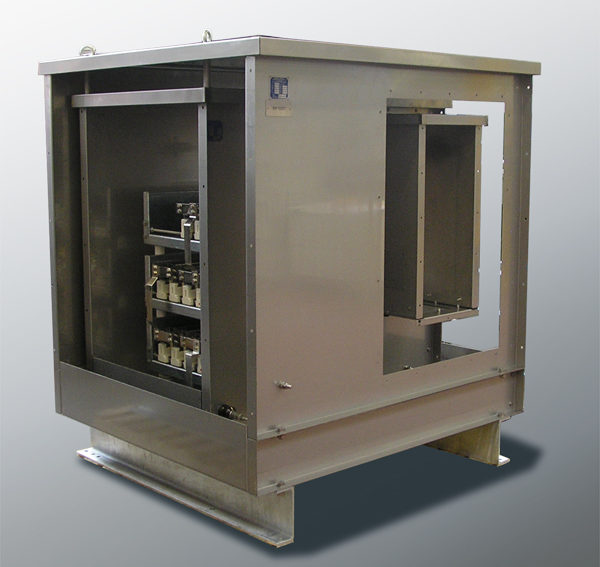- EMAIL: SALES@CRESSALL.COM
- • TEL: +44 (0) 116 273 3633
RESISTOR MATERIALS & TOLERANCES
The resistance alloys used are high temperature stainless steels capable of withstanding temperature excursions to 1000°C whilst retaining their strength.
NERs designed for operation to higher temperatures require less active mass, resulting in more compact and economical designs.
All the stainless steels used to make earthing resistors elements increase in resistance as they get hotter, the new industry standard (IEEE C57.32a) limits this resistance change to <67% over the temperature range of the resistor. This may not always be appropriate depending on the application and protection scheme employed. Cressall can offer alloys compliant with C57.32a (2020) as well as alternative lower cost solutions if permissible.
NEUTRAL EARTHING ENCLOSURES
ENCLOSURE MATERIAL AND DESIGN
NERs can reach high temperatures during operation. Unpainted stainless steel (either AISI304 or AISI316L) is usually the preferred material as it offers enhanced protection against corrosion and the heating effects of the resistor. We can also offer carbon steel (S275), pre-galvanised or aluminised zinc coated steels all with options for painting.
CONNECTIONS & CURRENT TRANSFORMERS
A range of customer connections can be offered.
- Direct into the resistor compartment, terminated on a support insulator.
- To an air/air bushing housed in a side mounted cable box.
- To a roof mounted air/air bushing.
With this last option there is usually a requirement to ensure that the exposed terminal is high enough to avoid personnel contact (typically 2.9m), where enclosures are below this we can supply additional base stands to lift the enclosure to an appropriate (agreed) height.
Where required we can offer current transformers (CT’s). If the neutral connection is via cable a low voltage ring core CT is most commonly used, this provides a compact, cost effective solution.

The CT is positioned above the incoming HV cable gland plate so that the cable passes through this before termination to the resistor, the cable insulation ensures the correct voltage class is achieved.
If the HV connection is via an exposed roof bushing or the current rating is low then the most common approach is to install the CT on the LV (earth) side of the resistor, for low current applications a primary wound CT is used.
Fully rated MV CT’s can be offered however these tend to be larger and more expensive.
NEUTRAL EARTHING ENCLOSURE IP RATINGS
A well-ventilated neutral earthing enclosure allows more rapid cooling after a fault. Given that the materials inside the resistor enclosure are stainless steels, ceramics and ceramic insulators, all suitable for unprotected outdoor use, we consider that enclosure ratings of IP23 are the right balance between good ventilation and the need to keep out birds and animals.
We also offer higher IP levels such as IP54 or IP56 enclosures where requested. However, cooling times will be extended when ventilation is restricted.
ENCLOSURE TEMPERATURES
After a full fault or where a continuous current is present some parts of a neutral earthing enclosure may be hazardously hot. The effects of this can be mitigated by labelling, by ventilation design, by enclosure construction or by the addition of heat shields that keep the hot parts out of reach.
